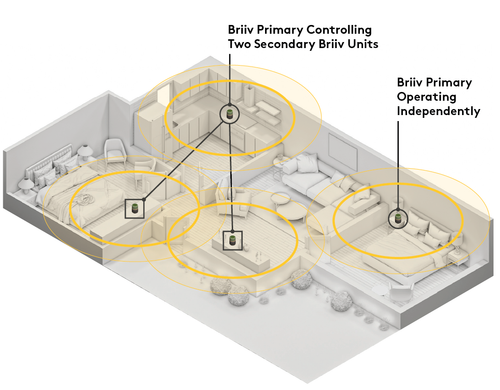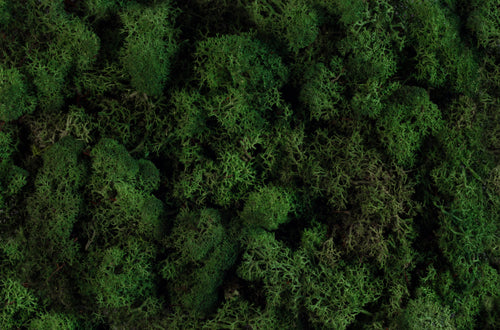
Briiv Pro vs. Smoke
Fun With Metal
Back in December we started machining the electrodes that are going to be used to spark erode the tool for injection moulding. These pieces of copper will slowly sink into the metal of the tool over a couple of days to create the intricate negative shapes that form the base of Briiv Pro.
Particularity challenging are the fins of Briiv Pro. Designed to be thin and non-obstructive to the air flow, this also makes them very thin and intricate to machine.

This is one of the first stages in the tooling process and also a very satisfying one, as it's the first glimpse of how Briiv Pro will look formed out of a special grade of solid copper!
How Is 'Stuff' From The Air Captured By Briiv?
We get asked this a LOT, and we've had a quite a few private messages about how Briiv Pro captures dust and other nasty things.
The filters are designed to capture particles in the air through a series of physical and mechanical processes. Here's a list of some of those processes.
1. Filter Structure
The filters consist of a dense arrangement of randomly arranged fibres that create a labyrinth path for air to flow through.
2. Interception
Larger particles are captured through a process called interception. As air flows through the filter these particles, due to their size and inertia, are unable to navigate through the fibres and instead collide with and stick to the fibres. This happens mostly in the moss layer.
3. Impaction
Medium-sized particles follow the air stream but, due to their inertia, are unable to adjust quickly to the air flow direction changes caused by the fibres. This causes them to impact and get stuck to the fibres. This happens mostly in the coconut layer.
4. Diffusion
Smaller particles, influenced by Brownian motion (random movement of particles in the air), are more likely to collide with and be captured by much finer filter fibres. This is happening mostly in the final matrix layers of Briiv Pro.
5. Sieving
The dense arrangement of fibres acts as a sieve, effectively capturing particles of various sizes as they attempt to pass through the filter.
6. Electrostatic build up
The final layer uses a glass fibre as the base material. This builds up an electrostatic charge as the air passes through it. This action then acts like a magnet pulling particulates onto and into the filter as it passes through it.
What Actually Is PM2.5 And PM10?
For the terms "PM2.5 & PM10," the "PM" stands for Particulate Matter.
PM2.5 specifically refers to particulate matter that has a diameter of 2.5 micrometers or smaller. These particles can include a variety of substances such as dust, mould, and fine particulates from combustion sources like vehicle emissions and industrial processes. Monitoring PM2.5 levels is important for assessing air quality, as these fine particles can penetrate deep into the respiratory system and have potential negative health implications.
PM10 refers to particulate matter with a diameter of 10 micrometers or smaller. Like PM2.5, PM10 includes a range of particles of different sizes, including dust, pollen, mould, and particles from combustion sources. PM10 particles are larger than PM2.5 but still small enough to be inhaled.
Regulatory agencies and environmental monitoring programs often measure both PM2.5 and PM10 to evaluate air quality.
Air quality sensors will often have these measurements shown so that they can be compared to a long standing, tried and tested level of what is considered a safe amount of each and then give visual feedback, so people to know when their air is not safe.
Follow ups to this question are often how small is pollen? or what filters capture smoke?
To put something complicated into much simpler terms, we went away and created the table below. This is a general rule for the entire air purification industry and shows the pollutant, it's size range and what is required to capture it.

How Does Briiv Pro Stand Up To All This?
Briiv is tested based on the size of particles. Formaldehyde for example is incredibly tiny, smaller than 0.1 micron! Pollen particles on the other hand average about 25 microns.
Briiv pro has been tested with industry standard sensors, using PM2.5 and PM10 as the main testing metrics, and that is what is shown in the graphs on the campaign page.
Briiv is able to reliably capture particles as small as 2.5 microns. Smaller than that, particles behave much more erratically so it's harder to guarantee they'll all be removed, but Briiv does have the capacity to remove particles as small as 0.3 microns from the air.
Testing Cigarette Smoke In The Real World
Cigarette smoke can be a real problem for enclosed spaces as it lingers for a very long time. If you've ever lived in an apartment you'll also be very aware when your neighbours are smoking as it can permeate walls and travel a very long way within buildings.
We wanted to do a real rough and ready but very visual test for you guys so you could see what Briiv Pro is capable of. As you can see, it clears the smoke from an entire cigarette in around 10 seconds in our test tank!
We hope this was interesting and useful. If you have any questions, as always feel free to reach out to me and I will be happy to help.














































